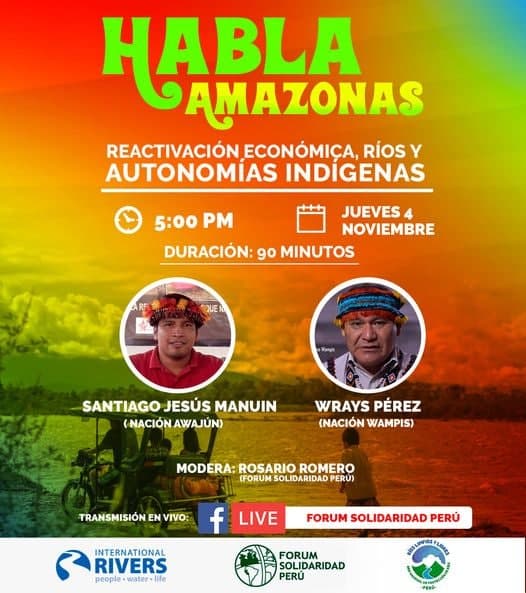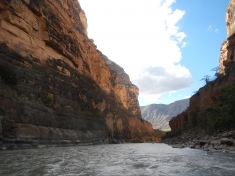Forum Solidaridad Perú
📌AHORA, HABLA AMAZONAS: REACTIVACIÓN ECONÓMICA, RÍOS Y AUTONOMÍAS INDÍGENAS (JUEVES 4 DE NOVIEMBRE, 5 PM.)
¿Qué reactivación económica necesita y debe emprenderse en la Amazonía peruana? ¿Qué es el derecho a las Autonomías indígenas y por qué ha sido y es importante?
A estas preguntas responderán, este jueves 4 de noviembre, a las 5 pm., Wrays Pérez de la Nación Wampís, defensor de los Ríos Kanus (Santiago) y el Kankaim (Morona), y Santiago Jesús Manuin de la Nación Awajún, defensores de los Ríos Nieva y Marañón. Convocado por Forum Solidaridad Perú y la Red Nacional de Protección de Ríos, con el apoyo de International Rivers, la moderación de de Rosario Romero de Forum.
Trasmisión en vivo por Facebook.
Información en este link: 📌http://www.psf.org.pe/…/ahora-habla-amazonas…/



